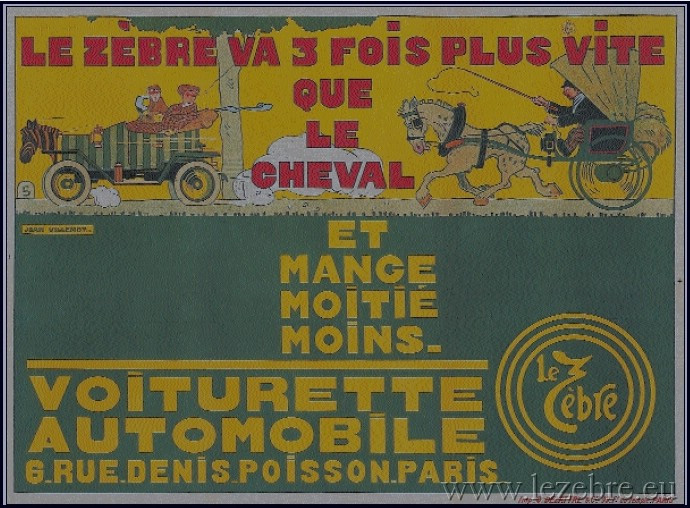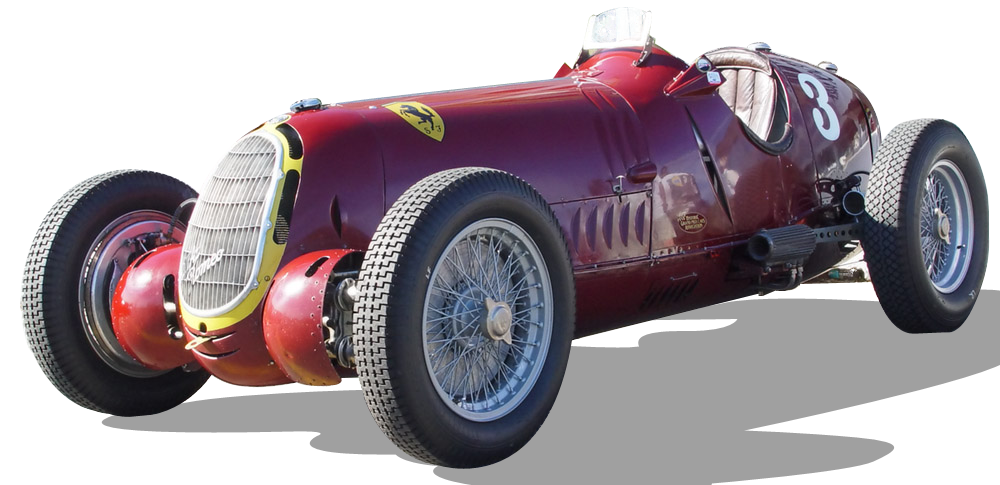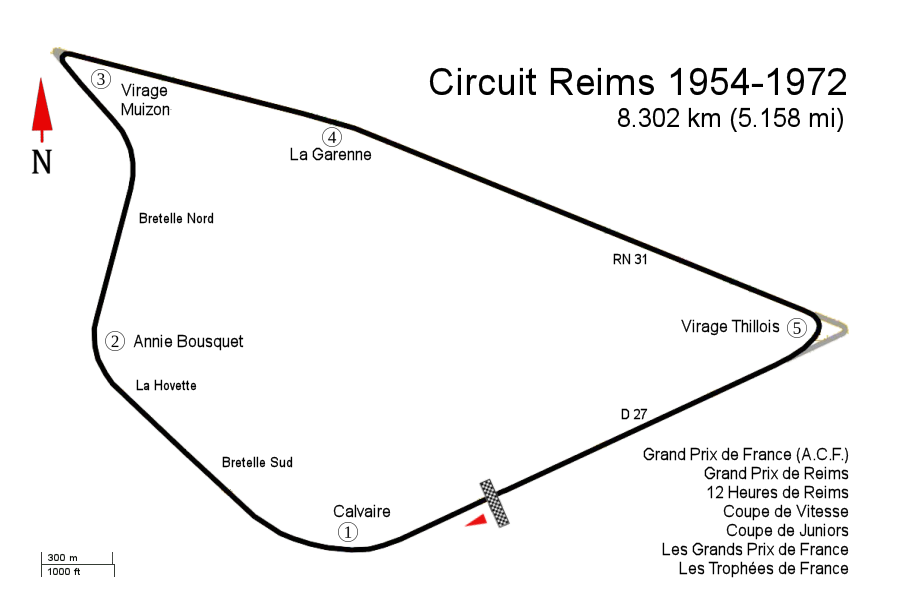|
Enrico Platé
Enrico Platé (28 January 1909, Milan, Italy – 2 February 1954, Buenos Aires, Argentina) was a motor racing driver and team manager. Although born in Italy, Platé raced, and latterly ran his racing team Scuderia Enrico Platé, under Swiss nationality. He began his career as a mechanic, but swiftly took to racing cars in addition to repairing them. His best result as a driver was fourth place (albeit also last place) in the 1938 Modena Autodrome. Although he did not achieve any notable success in the pre-World War II voiturette class, Enrico Platé became a significant and influential figure in post-war grand prix and early Formula One racing as a team owner. During his brief career in this role, Platé ran Maseratis for notable drivers such as Prince Bira, Harry Schell and fellow Swiss Toulo de Graffenried. Team owner Although he did not fully withdraw from driving until 1948, Enrico Platé tasted success as a team owner as early as 1946, when he provided the car that took rac ... [...More Info...] [...Related Items...] OR: [Wikipedia] [Google] [Baidu] |
Switzerland
). Swiss law does not designate a ''capital'' as such, but the federal parliament and government are installed in Bern, while other federal institutions, such as the federal courts, are in other cities (Bellinzona, Lausanne, Luzern, Neuchâtel, St. Gallen a.o.). , coordinates = , largest_city = Zürich , official_languages = , englishmotto = "One for all, all for one" , religion_year = 2020 , religion_ref = , religion = , demonym = , german: Schweizer/Schweizerin, french: Suisse/Suissesse, it, svizzero/svizzera or , rm, Svizzer/Svizra , government_type = Federalism, Federal assembly-independent Directorial system, directorial republic with elements of a direct democracy , leader_title1 = Federal Council (Switzerland), Federal Council , leader_name1 = , leader_title2 = , leader_name2 = Walter Thurnherr , legislature = Fe ... [...More Info...] [...Related Items...] OR: [Wikipedia] [Google] [Baidu] |
Voiturette
A voiturette is a miniature automobile. History ''Voiturette'' was first registered by Léon Bollée in 1895 to name his new motor tricycle. The term became so popular in the early years of the motor industry that it was used by many makers to describe their small cars. The word comes from the French word for "automobile", ''voiture''. Between World War I and World War II light-weight racing cars with engines limited to 1500 cc such as the Alfa Romeo 158/159 Alfetta, the Bugatti Type 13 and the original ERAs were known as voiturettes. In France, in the years after World War II a type of small three-wheeled vehicle voiturette was produced. In 1990s, voiturette became a French classification for a vehicle weighing less than 350 kilograms (770 lb) empty and carrying a load (i.e. passengers) of not more than 200 kilograms (~440 lb). The top speed is limited to 45 km/h (~30 mph) and engine size to 50 cc or 4 kilowatts for an engine of "another type" ... [...More Info...] [...Related Items...] OR: [Wikipedia] [Google] [Baidu] |
Alfa Romeo In Motorsport
During its history, Alfa Romeo has competed successfully in many different categories of motorsport, including Grand Prix motor racing, Formula One, sportscar racing, touring car racing and Rallying, rallies. They have competed both as a constructor and an engine supplier, via works entries (usually under the name Alfa Corse or Autodelta) and private entries. The first racing car was made in 1913, three years after the foundation of A.L.F.A., the ALFA 40/60 HP, 40/60 HP had 6-litre straight-4 engine. Alfa Romeo quickly gained a good name in motorsport and gave a sporty image to the whole marque. Pre-war Early history Alfa Romeo started motor racing almost immediately after it was founded. A.L.F.A. ventured into motor racing in 1911, with drivers Franchini and Ronzoni competing in the Targa Florio with two ALFA 24 HP, 24 HP models. The marque's first success came in 1913 when Nino Franchini finished second in the Parma-Poggio Berceto race with a ALFA 40/60 HP, 40/60 HP. Giuseppe ... [...More Info...] [...Related Items...] OR: [Wikipedia] [Google] [Baidu] |
Swedish Summer Grand Prix
The Swedish Grand Prix (Swedish: Sveriges Grand Prix) was a round of the Formula One World Championship from 1973 to 1978. It took place at the Scandinavian Raceway in Anderstorp (Gislaved Municipality), about from Jönköping, in Småland, Sweden. The first race to hold the title of Grand Prix in Sweden was the Swedish Winter Grand Prix, an ice race similar to races held in Estonia, Finland and Norway. The first Swedish Summer Grand Prix was held in 1933, but was not repeated until 1949. The first races with the title Swedish Grand Prix were three sports car races held at Råbelövsbanan starting in 1955. A Formula Two race held in 1967 also carried the title. History Origins While racing in Sweden had a long history it was not until 1931 that a race was first titled Grand Prix. The first Swedish Winter Grand Prix was held on a mammoth 46 kilometre circuit near Lake Rämen about 2 hours northwest of Stockholm in the snow and freezing cold with a lap time of approximately 35 m ... [...More Info...] [...Related Items...] OR: [Wikipedia] [Google] [Baidu] |
Maserati 4CLT/48
The Maserati 4CL and its derived sister model the Maserati 4CLT are single-seat open-wheel Grand Prix racing cars that were designed and built by Maserati. The 4CL was introduced at the beginning of the 1939 season, as a rival to the Alfa Romeo 158 and various ERA models in the voiturette class of international Grand Prix motor racing. Although racing ceased during World War II, the 4CL was one of the front running models at the resumption of racing in the late 1940s. Experiments with two-stage supercharging and tubular chassis construction eventually led to the introduction of the revised 4CLT model in 1948. The 4CLT was steadily upgraded and updated over the following two years, resulting in the ultimate 4CLT/50 model, introduced for the inaugural year of the Formula One World Championship in 1950. In the immediate post-war period, and the first two years of the Formula One category, the 4CLT was the car of choice for many privateer entrants, leading to numerous examples being in ... [...More Info...] [...Related Items...] OR: [Wikipedia] [Google] [Baidu] |
British Grand Prix
The British Grand Prix is a Grand Prix motor race organised in the United Kingdom by the Royal Automobile Club. First held in 1926, the British Grand Prix has been held annually since 1948 and has been a round of the FIA Formula One World Championship every year since 1950. In 1952, following the transfer of the lease of the Silverstone Circuit to the British Racing Drivers' Club, the RAC delegated the organisation of the race to the BRDC for the first time, and this arrangement has continued for all British Grands Prix held at Silverstone since then (organisation of British Grands Prix held at Aintree having meanwhile been similarly delegated to the British Automobile Racing Club). The British Grand Prix is currently held at the Silverstone Circuit near the village of Silverstone in Northamptonshire in England. The 2019 event was the 70th time that the race had been run as a World Championship event since the inaugural season in , and the 53rd time that a World Champio ... [...More Info...] [...Related Items...] OR: [Wikipedia] [Google] [Baidu] |
Circuit Bremgarten
The Circuit Bremgarten was a motorsport race track in Bern, Switzerland which formerly hosted the Swiss Grand Prix from 1933 to 1954 (Formula One, 1947 to 1954) and the Swiss motorcycle Grand Prix in 1949 and from 1951 until 1954. Bremgarten was built as a motorcycle racing track in 1931 in the ''Bremgartenwald'' (Bremgarten forest) in the north of Bern. The circuit itself had no true straight, instead being a collection of high-speed corners. It hosted its first automobile race in 1934, which claimed the life of driver Hugh Hamilton. In 1948 it claimed the life of Italian racer Achille Varzi. From the outset, Bremgarten's tree-lined roads, often poor light conditions and changes in road surface made for what was acknowledged to be a very dangerous circuit, especially in the wet. Bremgarten has not hosted an official motorsport event since 1955, when spectator racing sports, with the exception of hillclimbing and rallying, were banned in Switzerland in reaction to the 1955 Le ... [...More Info...] [...Related Items...] OR: [Wikipedia] [Google] [Baidu] |
Pau Grand Prix
The Pau Grand Prix (french: Grand Prix de Pau) is a motor race held in Pau, in the Pyrénées-Atlantiques department of southwestern France. The French Grand Prix was held at Pau in 1930, leading to the annual Pau Grand Prix being inaugurated in 1933. It was not run during World War II and in 2020–2021 due to the COVID-19 pandemic. The race takes place around the centre of the city, where public roads are closed to form a street circuit, and over the years the event has variously conformed to the rules of Grand Prix racing, Formula One, Formula Two, Formula 3000, Formula Three, Formula Libre, sports car racing, and touring car racing. In 2021, '' Autocar'' included the Pau Grand Prix in its list of "The 10 best street circuits in the world". Circuit The race is run around a long street circuit, the "Circuit de Pau-Ville" laid out round the French town, and is in many ways similar to the more famous Formula One Monaco Grand Prix. About 20 km to the west of the ... [...More Info...] [...Related Items...] OR: [Wikipedia] [Google] [Baidu] |
Nello Pagani
Cirillo Pagani (11 October 1911 – 19 October 2003), nicknamed "Nello", was an Italian Grand Prix motorcycle road racer and Formula One driver. He was born in Milan, Lombardy, and died in Bresso. He was known for his long career, spanning from 1928 to 1955, and for becoming the first 125cc World Champion in the inaugural 1949 campaign. He almost became a double Champion in that first year of the World Championship series. In the 500cc class he was officially runner-up. The series was run over six rounds with a rider's best three scores counting towards the championship. Englishman Les Graham on an AJS was Pagani's main rival. Although Pagani scored more overall points than Graham, he lost the championship with two wins and a third place as his scores that counted, whilst Graham had two wins and a second. Pagani's car racing exploits resulted in wins at the Pau Grand Prix in 1947 and 1948, before his single Formula One World Championship Grand Prix, on 4 June 1950, in the 1 ... [...More Info...] [...Related Items...] OR: [Wikipedia] [Google] [Baidu] |
Maserati 4CL
The Maserati 4CL and its derived sister model the Maserati 4CLT are single-seat Open-wheel racing, open-wheel Grand Prix motor racing, Grand Prix racing cars that were designed and built by Maserati. The 4CL was introduced at the beginning of the 1939 season, as a rival to the Alfa Romeo 158 and various English Racing Automobiles, ERA models in the voiturette class of international Grand Prix motor racing. Although racing ceased during World War II, the 4CL was one of the front running models at the resumption of racing in the late 1940s. Experiments with two-stage supercharger, supercharging and tubular chassis construction eventually led to the introduction of the revised 4CLT model in 1948. The 4CLT was steadily upgraded and updated over the following two years, resulting in the ultimate 4CLT/50 model, introduced for the inaugural year of the Formula One World Championship in 1950. In the immediate post-war period, and the first two years of the Formula One category, the 4CLT wa ... [...More Info...] [...Related Items...] OR: [Wikipedia] [Google] [Baidu] |
Reims-Gueux
The circuit Reims-Gueux was a Grand Prix motor racing road course, located in Gueux, Marne, Gueux, 7.5 km (5 miles) west of Reims in the Champagne (historical province), Champagne region of north-eastern France, established in 1926 as the second venue of the Grand Prix de la Marne. The triangular layout of public roads formed three sectors between the villages of Thillois and Gueux, Marne, Gueux over the La Garenne-Colombes, La Garenne / Gueux intersection of Route nationale 31. The circuit became known to be among the fastest of the era for its two long straights (approximately 2.2 km; 1¼ miles in length each) allowing maximum straight-line speed, resulting in many famous slipstream battles. Circuit history Motor racing at Reims started in 1926 with the second Grand Prix de la Marne, relocating the race from the square-shaped Circuit de Beine-Nauroy east of Reims to Reims-Gueux, west of Reims. The original circuit placed the start/finish line on road D27, approxima ... [...More Info...] [...Related Items...] OR: [Wikipedia] [Google] [Baidu] |
Grand Prix De La Marne
The Grand Prix de la Marne (commonly known as the Marne Grand Prix) was a motor race organized by the Automobile Club de Champagne and staged at the circuit Reims-Gueux on public roads located west of the city of Reims in the Marne département of north-eastern France. It proved to be one of the fastest and most prestigious road races in Europe. History The origins of motor racing in the Marne district of the Champagne region date to 1912/1913 motorcycle competitions held on a road course referred to as the Circuit de la Champagne à Reims near the town of Sarcy (about west-south-west of Reims). The first race for automobiles was held on August 2, 1925 at the 20 km Circuit de Beine-Nauroy (approximately 10 km south-east of Reims near the Reims-Prunay airport on road D-931). In 1926, the Grand Prix moved to the Reims-Gueux circuit, starting an annual series to run un-interrupted until 1931. By 1932, the popularity and success of the race prompted the French Autom ... [...More Info...] [...Related Items...] OR: [Wikipedia] [Google] [Baidu] |







